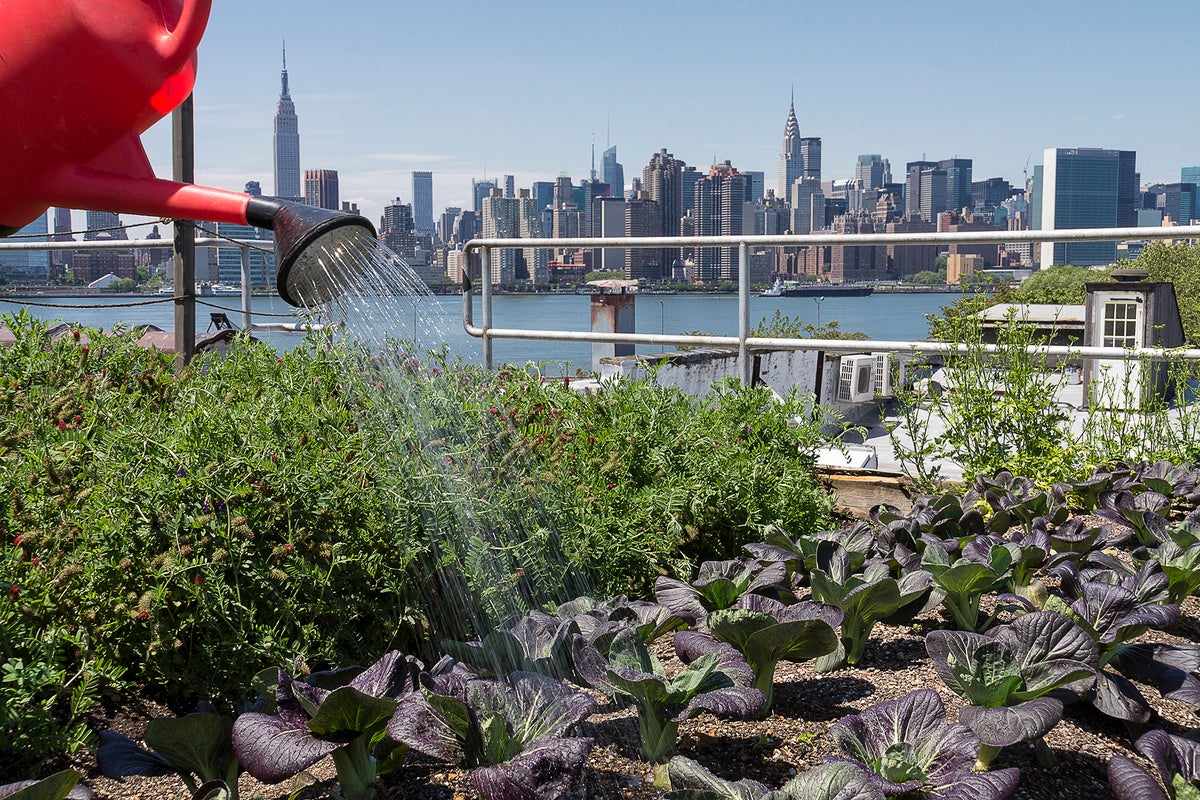Get This Report on City Blooming
Table of ContentsCity Blooming Fundamentals Explained7 Easy Facts About City Blooming ShownRumored Buzz on City BloomingNot known Details About City Blooming Indicators on City Blooming You Need To Know
Intrigued in growing food to buy in the City of Chicago? Thinking of starting a community yard? Adjustments to the Chicago Zoning Statute enable farming uses like community gardens and city ranches in numerous parts of the city. Below is a listing of frequently asked inquiries regarding the regulations and guidelines that growers must take into consideration when preparing a city agriculture task.
The zoning modification does not modify any other codes dealing with composting, structure authorizations, buying or renting City had property, service licenses or ecological contamination. There are existing codes that control these concerns and they stay completely effect and might apply to your task. Neighborhood yards are usually possessed or taken care of by public entities, civic organizations or community-based companies and maintained by volunteers.
Urban farms expand food that is planned to be sold, either on a nonprofit or for-profit basis. Due to their industrial function, city farms require an organization permit. Yes. A neighborhood yard is allowed to offer surplus produce that was grown on site if the sales are accessory or secondary to the garden's main purpose defined over.
5 Easy Facts About City Blooming Shown
The quantity of compost material can not go beyond 25 cubic lawns at any type of given time according to the criteria in 7-28-715 of the City's Municipal Code. Since the dirt at many brand-new yard sites needs modifying, compost, dirt, timber chips, or various other materials can be gotten to construct or enhance the expanding room.

If a structure license is required after that the hoophouse will certainly be thought about an accessory structure. You can figure out more concerning the building authorization requirements by speaking to the Division of Buildings. The 25,000-square-foot dimension limitation is planned to stop a single neighborhood yard from dominating an offered block or diminishing the block's existing residential or business personality.
The limit does not use to yards found in Public Open Room (POS) districts. Can there be even more than one community yard that is 25,000 square feet on a single block? Secure fencing is not needed, nonetheless, gardens that have huge car parking locations might be called for to install secure fencing or various other landscape design functions.
Getting The City Blooming To Work
B1 & B2 districts require that all business use tasks be performed inside your home. Is fencing required for city ranches? Fencings may be required, along with landscape design and testing, for specific auto parking locations and outside work or storage locations depending on location and the specific task taking location.
Yes. Urban farms require structure permits and zoning authorizations before building and construction. Other types of city evaluation might be required relying on details frameworks, activities, size, landscape design, licensing, public heath and stormwater management issues. A lot of these demands are identified in the job style or permitting process, however, the candidate may be accountable to separately identify certain licenses or permits that might be called for.
The Division of Company Matters and Consumer Security can assist identify the specific type of service license that's called for. Off road car park is required for many business tasks in Chicago. The needed number of car parking areas is based on the number of employees functioning on site and not the square video footage of the expanding room.
An Unbiased View of City Blooming

Yes. A metropolitan ranch can market garden compost material created on website, however, the operation needs to follow the laws in 7-28-715 of the Chicago Municipal Code. Yes. Aquaponic systems are allowed inside your home wikipedia reference on urban farms in lots of zoning districts. Nonetheless, a zoning evaluation and building permit is called for in order to mount structures or systems and a company certificate is required as defined over.
Up to 5 hives or colonies of honey might be maintained as an accessory usage. Nonetheless, beekeepers have to register with the Illinois Division of Farming. For additional information about the recommended zoning modification you may get in touch with the Division of Real Estate and Economic Advancement, Bureau of Planning and Zoning at 312.744.8563.
Farming in cities and metropolitan areas An urban ranch in Chicago. Urban farming refers to various practices of cultivating. https://www.imdb.com/user/ur183982377/?ref_=nv_usr_prof_2, processing, and distributing food in metropolitan areas. The term likewise puts on the location tasks of pet husbandry, aquaculture, beekeeping, and gardening in a metropolitan context. Urban farming is distinguished from peri-urban agriculture, which happens in rural areas at the edge of suburbs.
City Blooming Can Be Fun For Everyone
It can entail an activity of organic farmers, "foodies" and "locavores", that seek to create social networks started on a shared principles of nature and neighborhood holism. These networks can develop by means of formal institutional assistance, becoming incorporated into local community planning as a "transition community" movement for sustainable urban growth.
Some of the initial proof of city farming comes from Mesopotamia.